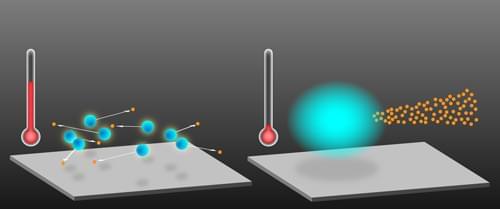A Bose-Einstein condensate of radioactive atoms could turn into a source of intense, coherent, and directional neutrino beams, according to a theoretical proposal.
Neutrinos are the most abundant massive particles in the Universe, yet they are the ones about which we know the least. What makes these elusive particles hard to study is their feeble interaction with matter—trillions of neutrinos pass through our bodies every second without leaving a trace. However, neutrinos may hold deep secrets about the Universe—understanding their properties could hint at new particles and forces beyond the standard model of particle physics or shed light on why matter came to dominate over antimatter. Despite these tantalizing prospects, some of the most basic questions about neutrinos remain unanswered. To address such questions experimentally, Benjamin Jones of the University of Texas at Arlington and Joseph Formaggio of MIT suggest that a Bose-Einstein condensate (BEC) of radioactive atoms could offer a platform for building a “neutrino laser” [1].
